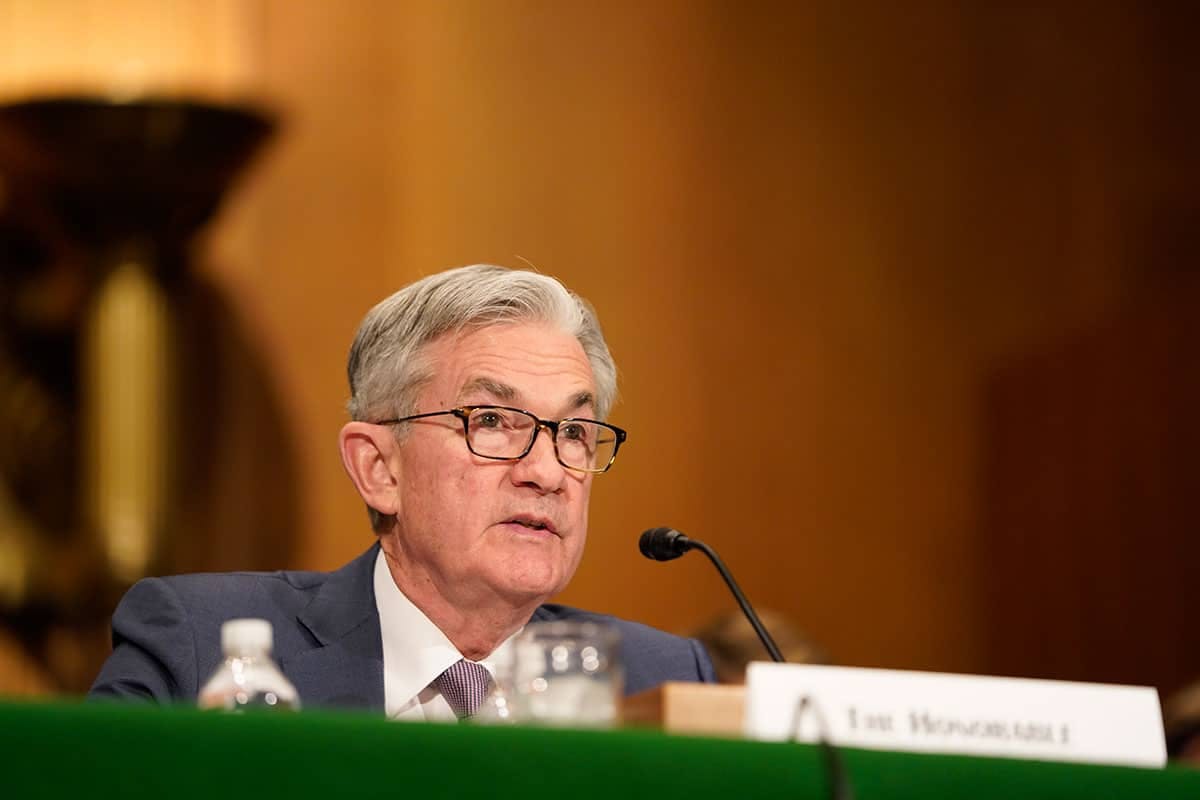After two weeks of deliberation, the U.S. central bank, the Federal Reserve (Fed), has decided to maintain its key interest rate at the current record low of 0.0- 0.25 per cent.
But, they believe it will “soon be appropriate” to raise rates, signalling that interest rates would begin to rise as early as March.
An increase in rates would be a critical step in ending pandemic-era, low-rate policies that have fuelled hiring and growth but have also escalated inflation.
Moves by the Fed will add to expectations that the Reserve Bank of Australia will raise rates this year. Several major banks expect the RBA to increase rates in August, while some analysts have said it could come as early as May.
Inflationary pressure
The Fed is under pressure to tame soaring inflation.
Inflation has hit a forty-year high of 7 per cent in the U.S. The Fed says it is not only because of job growth and partly due to the supply chain issues caused by Covid-19.
Fed Chairman Jerome Powell recently said the central bank was watching wage growth closely for further evidence that inflation could morph into a more persistent problem.
The Committee said in a statement, “[We] The Committee seeks to achieve maximum employment and inflation at the rate of 2 per cent over the longer run.
“With inflation well above 2 per cent and a strong labour market, the Committee expects it will soon be appropriate to raise the target range for the federal funds rate.
“Overall financial conditions remain accommodative, in part reflecting policy measures to support the economy and the flow of credit to U.S. households and businesses.”
Mr Powell explains that both sides of the Fed’s mandate (price stability and maximum employment) call for a move away from highly accommodative policy.
Unemployment rate falls
U.S. Job gains have been significant in recent months, and the unemployment rate has steadily declined. The U.S. jobless rate dropped to 3.9 per cent last month.
U.S. Unemployment rate
While a strong job market is fuelling demand-side inflation, the Fed wants to ensure gains are long-term and not a fleeting result of the pandemic.
“I think there’s quite a bit of room to raise interest rates without threatening the labour market,” Federal Reserve chairman Jerome Powell noted.
While the unemployment rate is at a healthy low, data released by the U.S. Bureau of Labor Statistics show a marginal improvement in the share of people looking for a job.
U.S. Participation rate
The labour participation rate inched higher to 61.9 per cent in December, up from 61.8 per cent in November. But it is still more than one per cent shy of the pre-pandemic threshold.
Concerns about Covid-19 and childcare issues are mainly to blame for holding back a more substantial return to work. Keeping the labour participation rate below where economists anticipated it would be at this stage of the recovery.
Overall, average hourly earnings grew by 0.6 per cent in December, for an annual gain of 4.7 per cent. Continued growth in the participation rate may ease wage pressure slightly but is unlikely to bring prices down.
Fixing supply shortages may not fix inflation
Supply shortages continue to plague the U.S. market, contributing to inflation’s “perfect storm”.
However, once supply chain pressures ease, the reality of the problem will become more evident.
The Committee noted, “Supply and demand imbalances related to the pandemic and the reopening of the economy have continued to contribute to elevated levels of inflation.”
U.S. economist Stephen S Roach writes, “Most forecasters expect inflation to moderate over the course of this year. As supply-chain bottlenecks ease and markets become more balanced, that is a reasonable presumption.
“But, the U.S. economy is still running hot, and the labour market, at least as measured by the plunging unemployment rate, is tighter than at any point since January 1970.”
Meaning: Inflation is likely to hang around, despite rates rising and supply chains normalising.
Markets react
Cheap credit has driven significant gains on the U.S stock market over the course of the pandemic.
After the Federal Reserve signalled intentions to raise interest rates in March, stocks gave up gains.
Trading on Wall Street started strong, but the major indices closed slightly lower as investors reacted to the U.S. central bank’s rate-setting Committee’s announcement that the cheap money flowing through the economy could start coming to an end soon.
Having been up more than 2 per cent earlier in the session, the benchmark S&P 500 slid 0.2 per cent to 4,349, the blue-chip Dow Jones index lost 0.4 per cent to 34,168, and the Nasdaq Composite closed little changed at 13,542.
Mr Powell said further economic growth and recovery would not be held back by increased rates.
The Fed boss also said the bank was not making crucial monetary policy decisions based on the recent fluctuations in U.S. sharemarkets, which have recorded corrections in major indices.
Mr Powell concludes by saying, “I would say the Committee is of a mind to raise the Federal funds rate at the March meeting, assuming that conditions are appropriate for doing so.
“We have our eyes on the risks, particularly around the world. We do expect some softening in the economy from omicron, but we think that should be temporary, and we think the underlying strength of the economy should show through fairly quickly after that.”
Read more:What happens when the cash rate goes up?
Read more:US faces highest inflation in almost half a century
Keep up to date with our stories on LinkedIn, Twitter, Facebook and Instagram.

